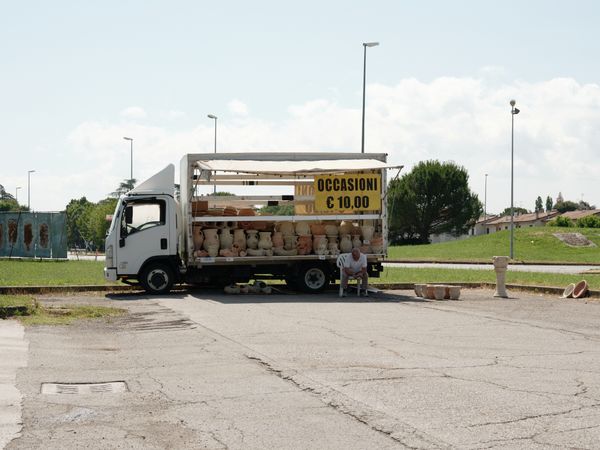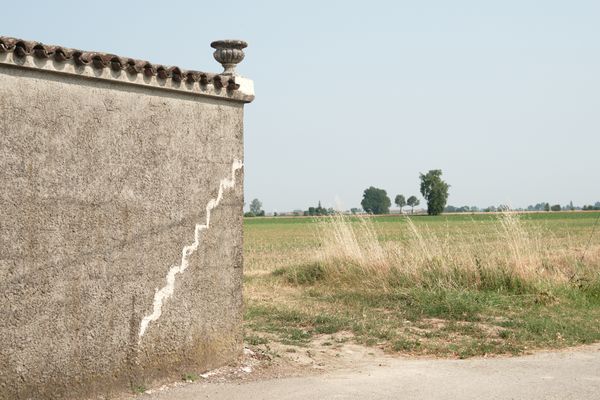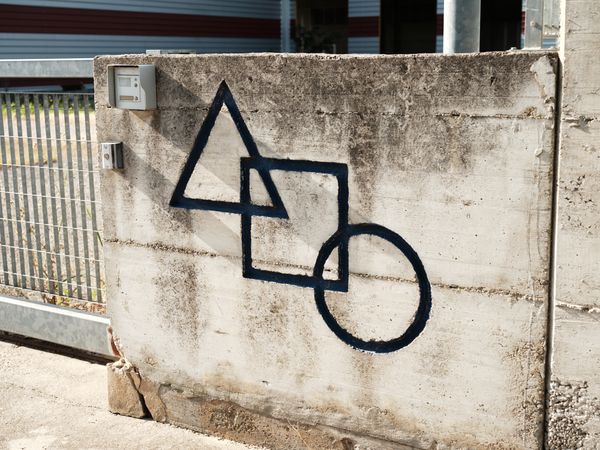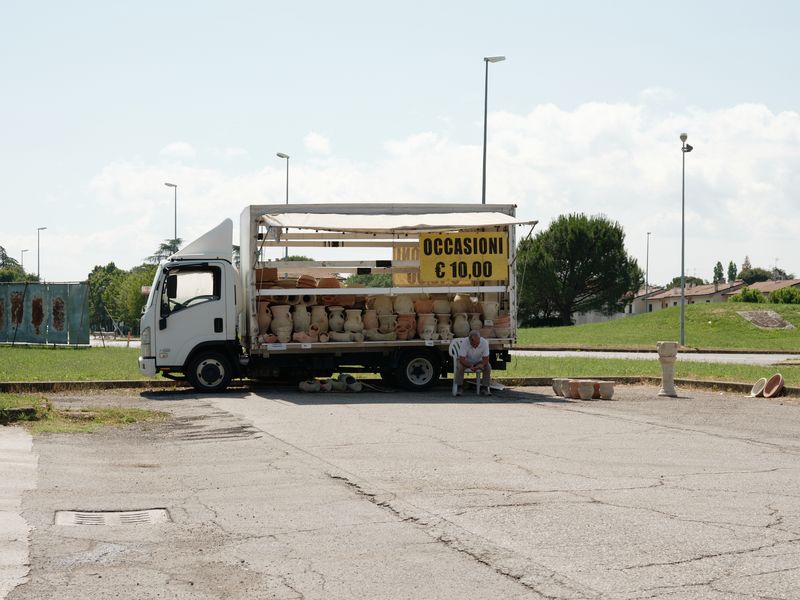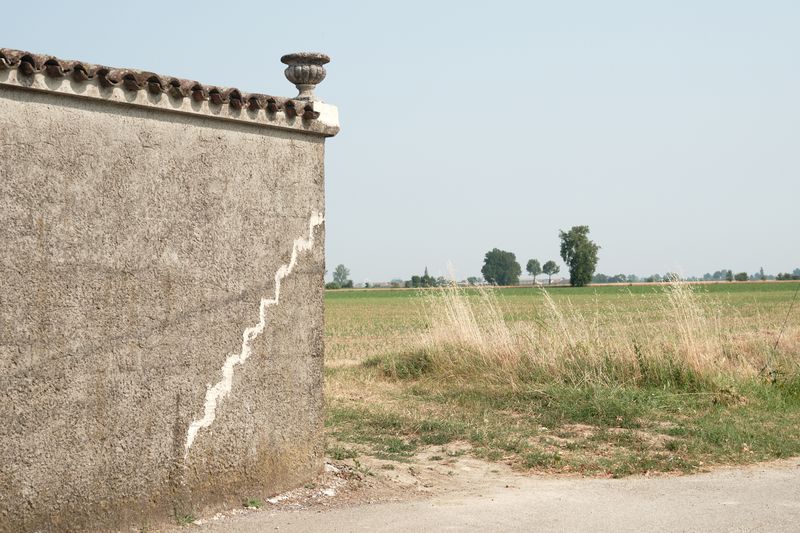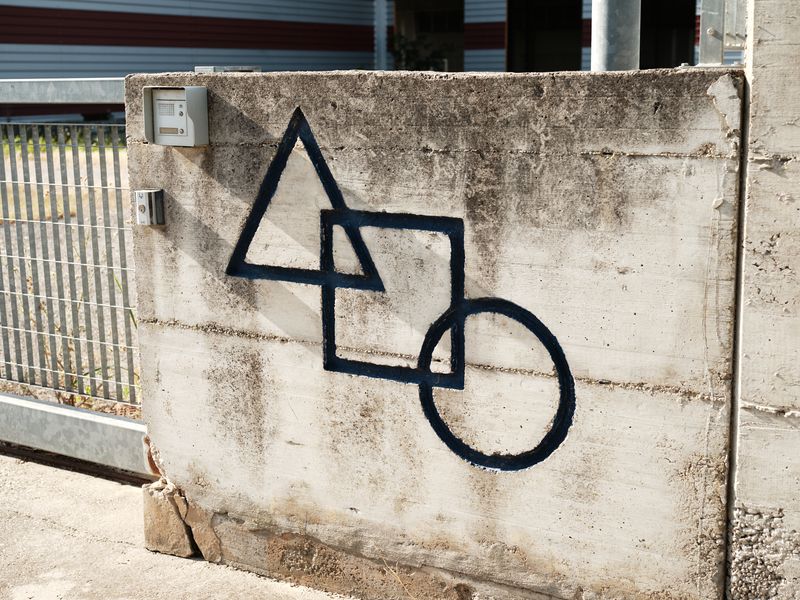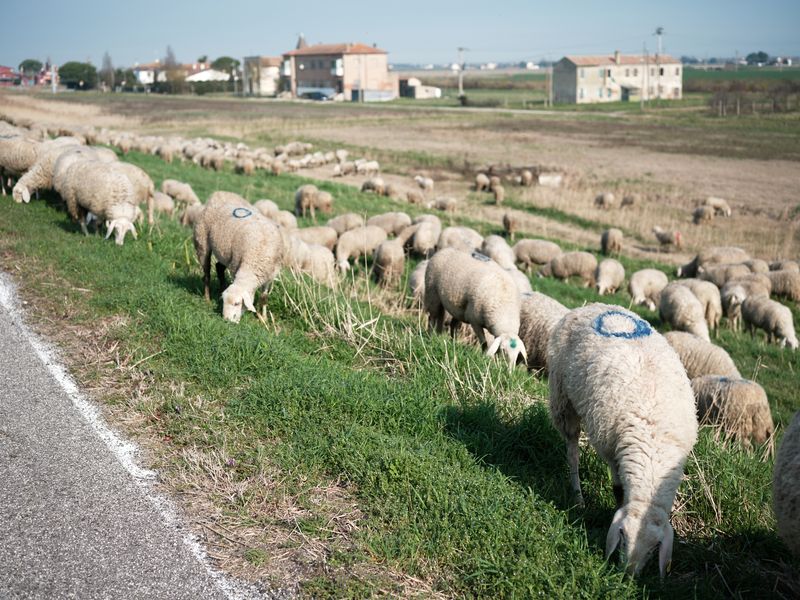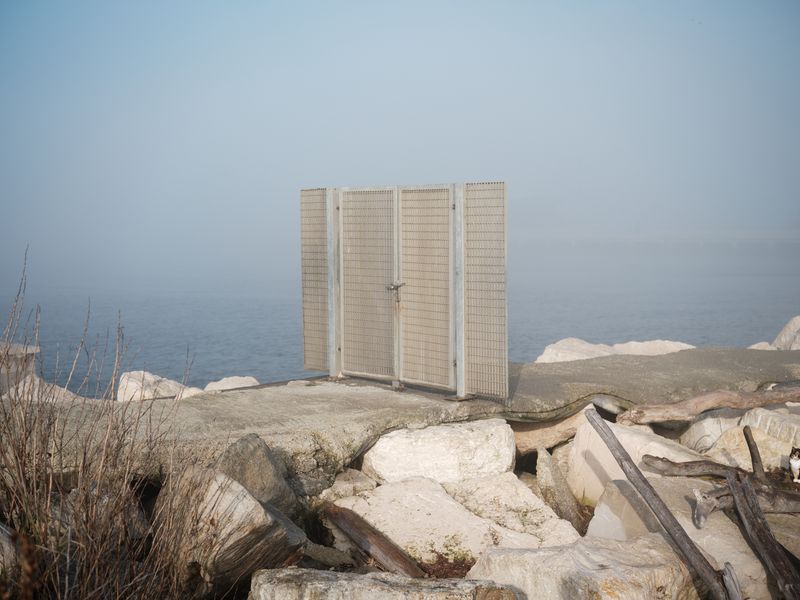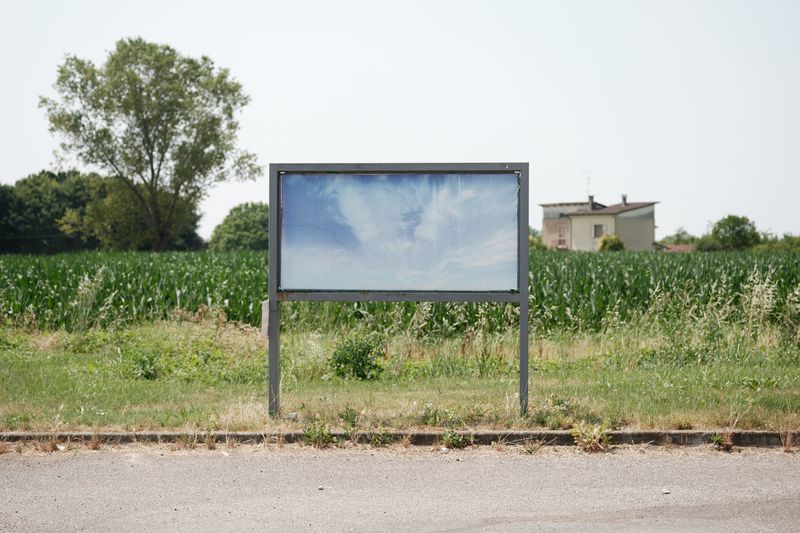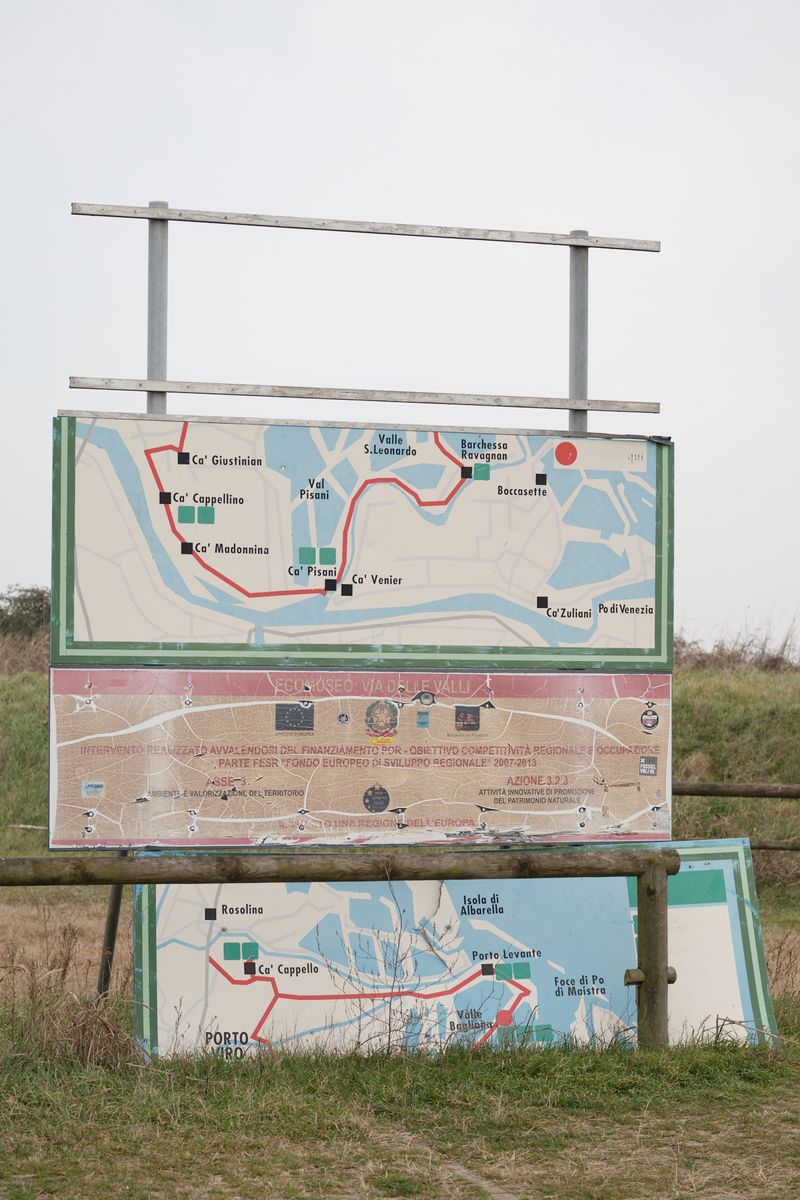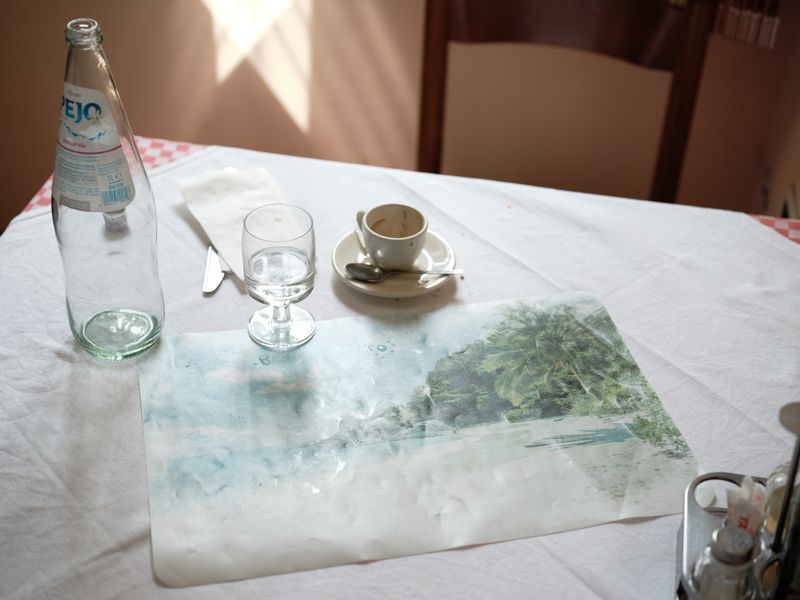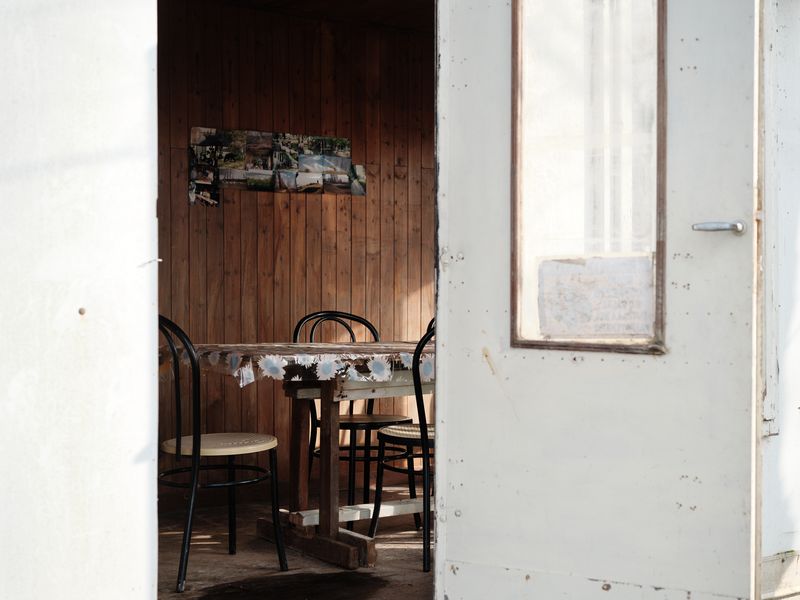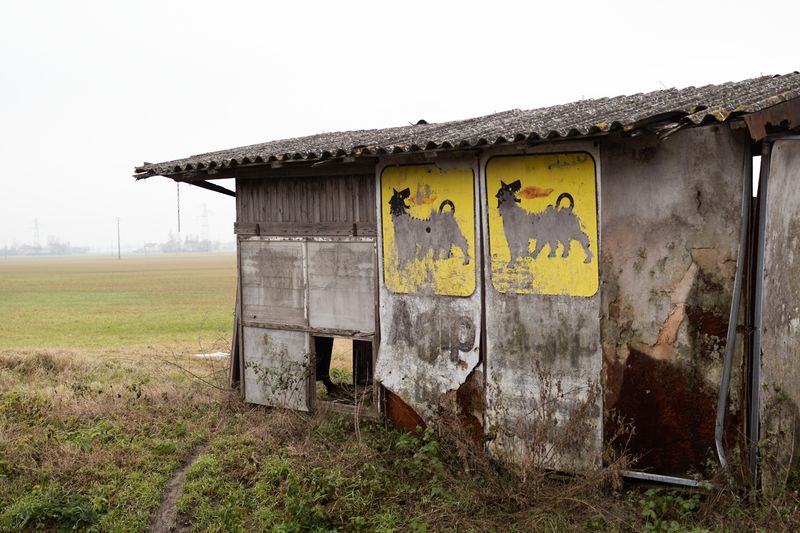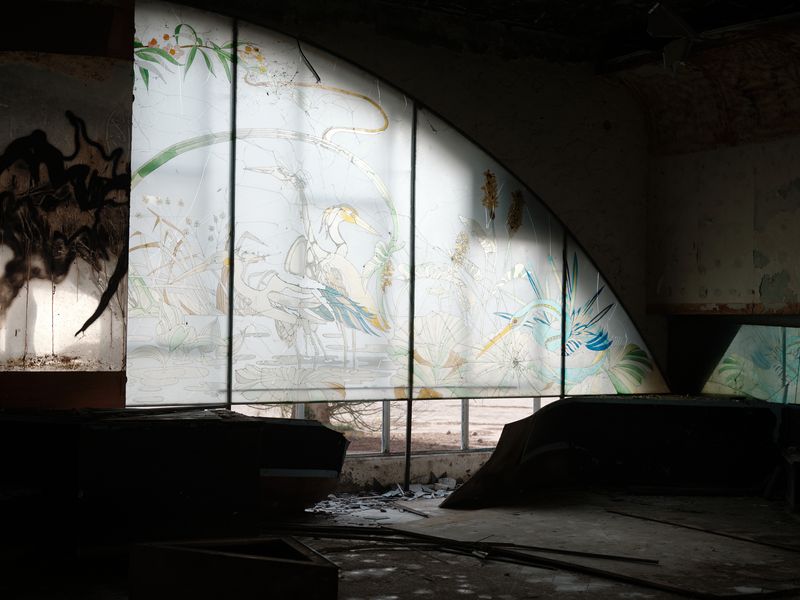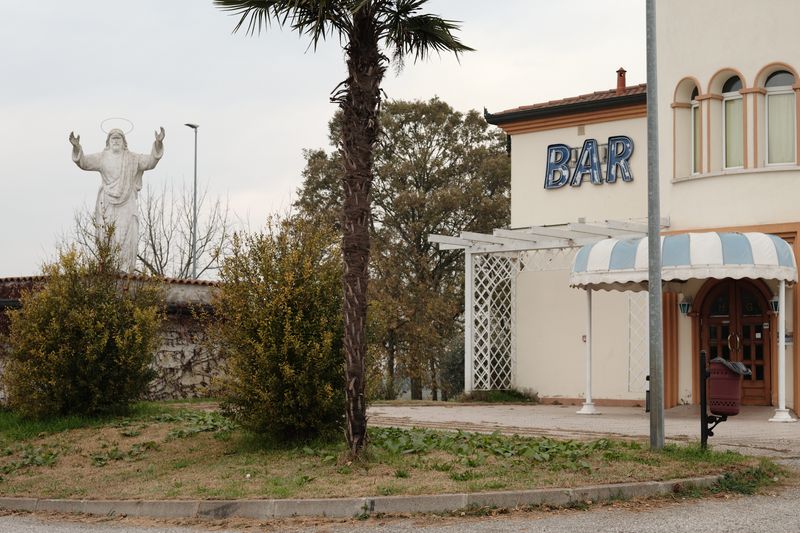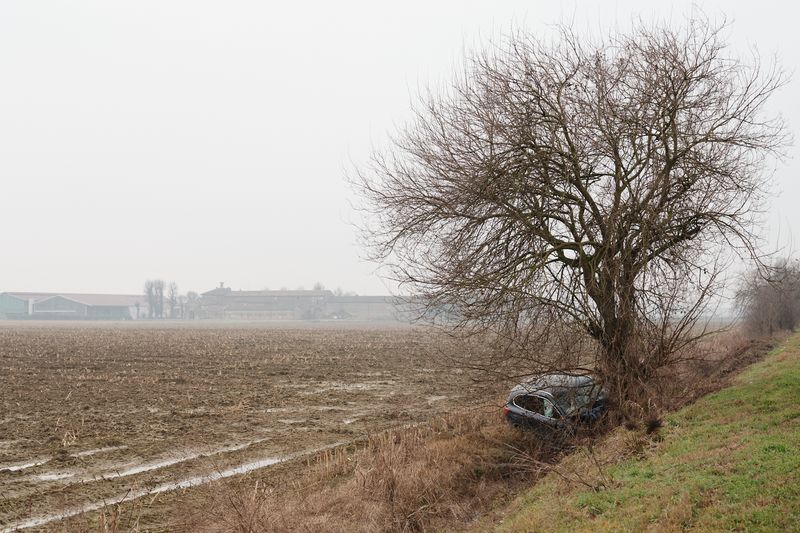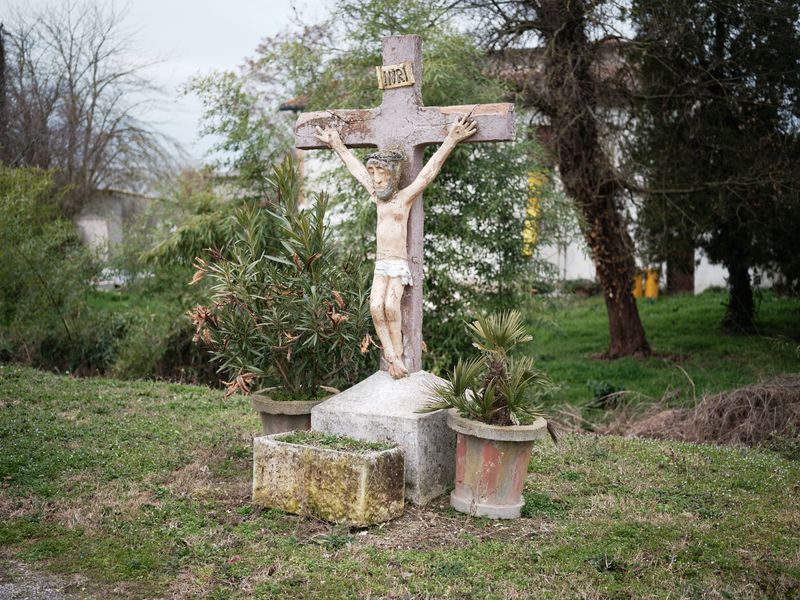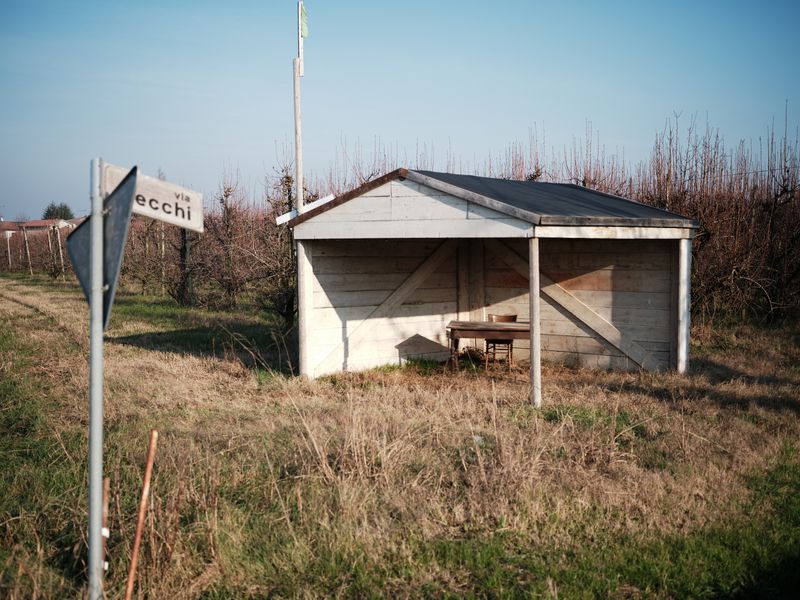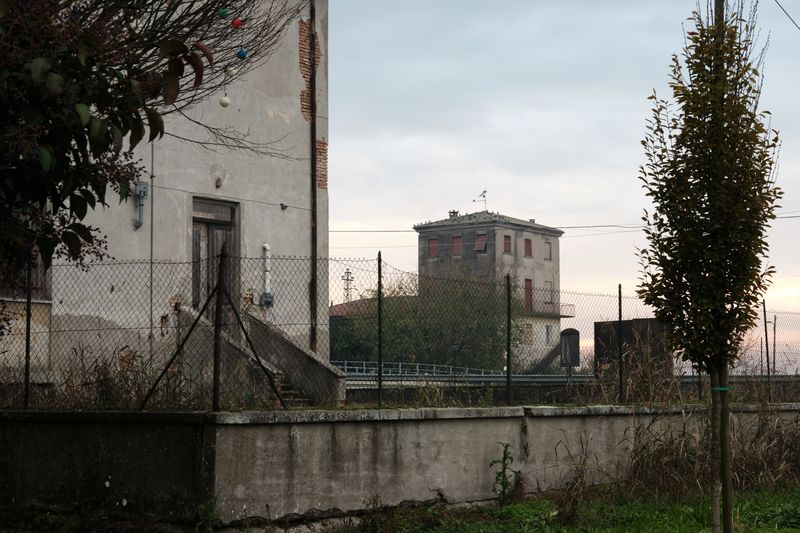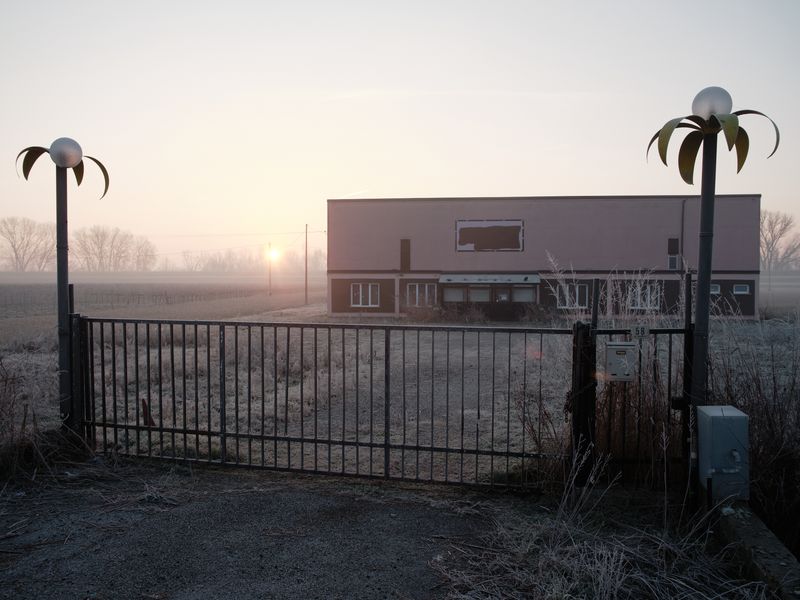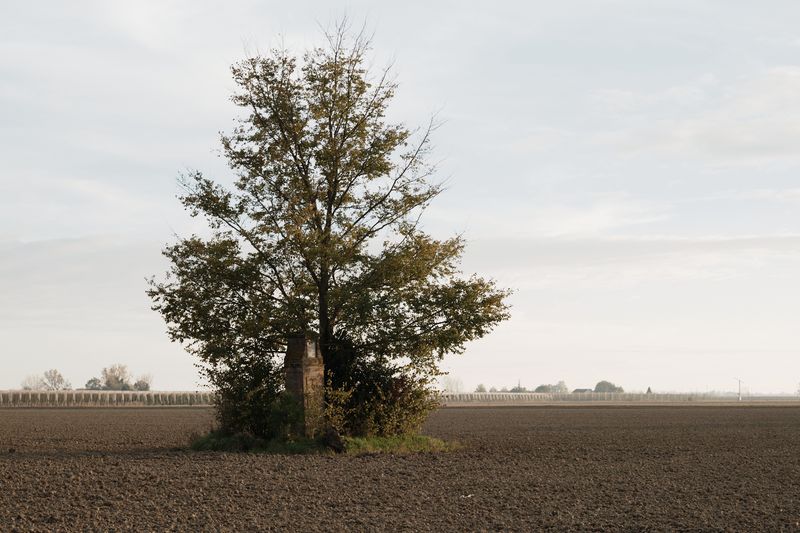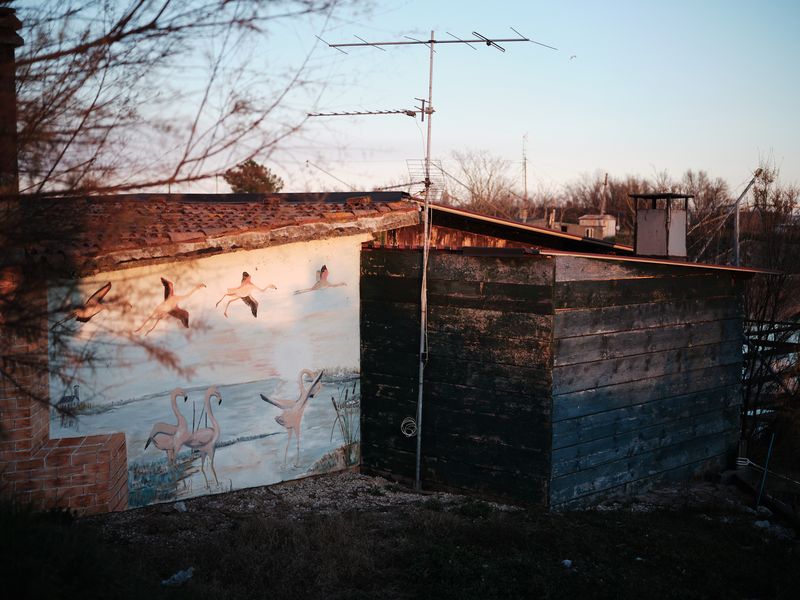The Archeological Bazaar
-
Dates2024 - Ongoing
-
Author
-
Recognition
“The Archeological Bazaar” is an ongoing project about the Italian Pianura Padana, a vast flat land area that runs from Milan to the sea. It's an archeological expedition into this fragmented territory and the relics that populate it.
“The Archeological Bazaar” is an ongoing project about the Italian Pianura Padana, a vast flat land area that runs from Milan to the sea. I vividly remember the drives I used to undertake with my family as a kid that passed through these places. As soon as we left the limits of the city, it seemed like we were transported into a mysterious area I struggled to decipher. This is not surprising per se; after all, it’s a territory that went through huge changes in the last century, from being a rural farmland to a hybrid mesh of fields, factories, commercial centers, and tourist destinations that feels impossible to categorize.
In 2024, I embarked on the first of many trips aimed at fulfilling this curiosity. The main goal was simply to explore the territory with my cameras and try to understand it, being unsure of how the project would develop.
As time passed, I found myself coming home with more and more images of artifacts, objects, and fragments that had been left behind. I was under the impression that the territory itself has shed its identity over and over again, leaving behind traces of what it once was. This recurrent metamorphosis is translated into a complete fragmentation of every aspect of the places I encountered, a fragmentation that carried over into the work I was producing.
It was at this point that I encountered the essay by Gianni Celati titled “The Archeological Bazaar.” Here, he writes about modern relics and their difference from artifacts we could find in a museum. What makes the former fascinating is that it’s impossible to reattach them to their history. When we see a broken object in a thrift store, we no longer see it as incomplete, as if it were a Greek statue missing an arm, but rather accept it and cherish it as is. These are objects that live on the margins of what we see, on the margins of history, and our attention is what makes them precious, valuable, and thus worthy of not being forgotten.
Fragmentation is the point of these objects, and fragmentation is the point of this project. The loss of context, writes Celati, makes it impossible to use these objects to attach them to a wider history, which is what a Museum would do with an ancient relic. The only way to present them it’s as if they were on the table of a Bazaar, where a capricious seller would arrange them in a way that seems fit, in a way that creates a brand new context in which these objects live, one that has nothing to do with their original one.
This latter approach is the one I’m using for this photobook. The work is still in progress (it's an early dummy that has been created without the contribution of any designer), and in its current form, the book consists of 4 smaller booklets, each a leporello, where each book takes these fragments and recontextualizes them in its own way.
The first booklet, titled “The Chaotic Collection” functions as a sort of allegorical origin story for the territory. A whirlwind sweeps through a hay field, causing huge chaos (with the smallest real consequences).
The second booklet, titled “The Mysterious Collection”, groups together symbols whose meaning is cryptic and uncertain.
The third booklet, titled “The Misplaced Collection”, focuses on icons whose function has been lost or forgotten.
The fourth booklet, titled "The Abandoned Collection", focuses on things, people, and places that have been left behind; traces of previous lives.
The book is far from being finished (I'm planning another photographic trip in the fall and I want to start collaborating with a designer and/or a publisher for future drafts), but I'm satisfied with the direction that the project has been taking and I'm excited to work on it further in the following months.
